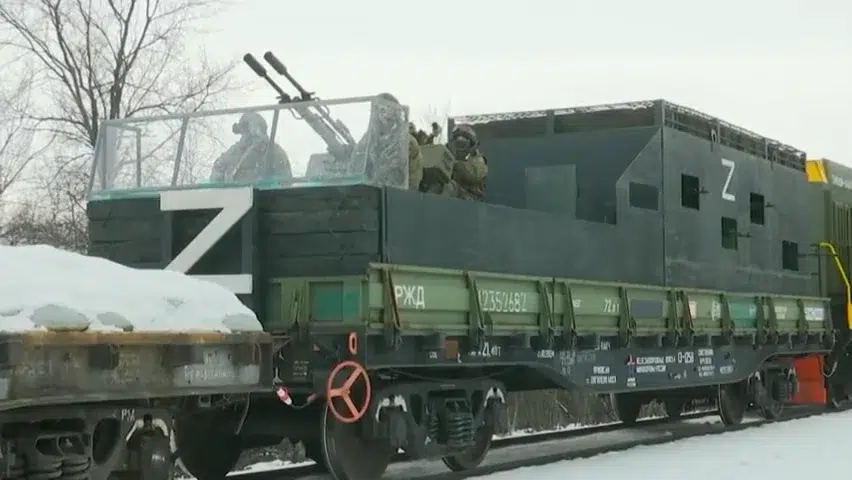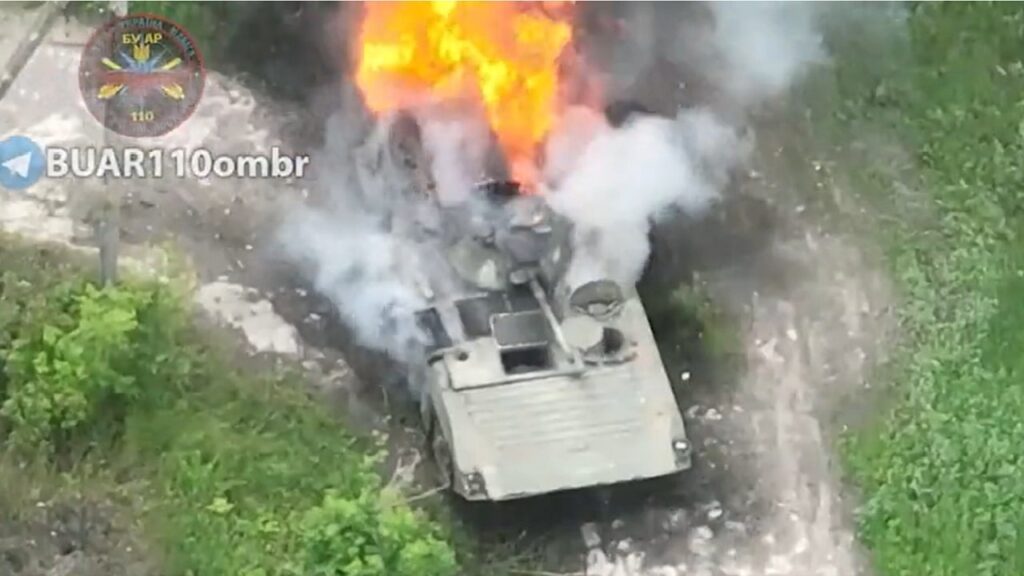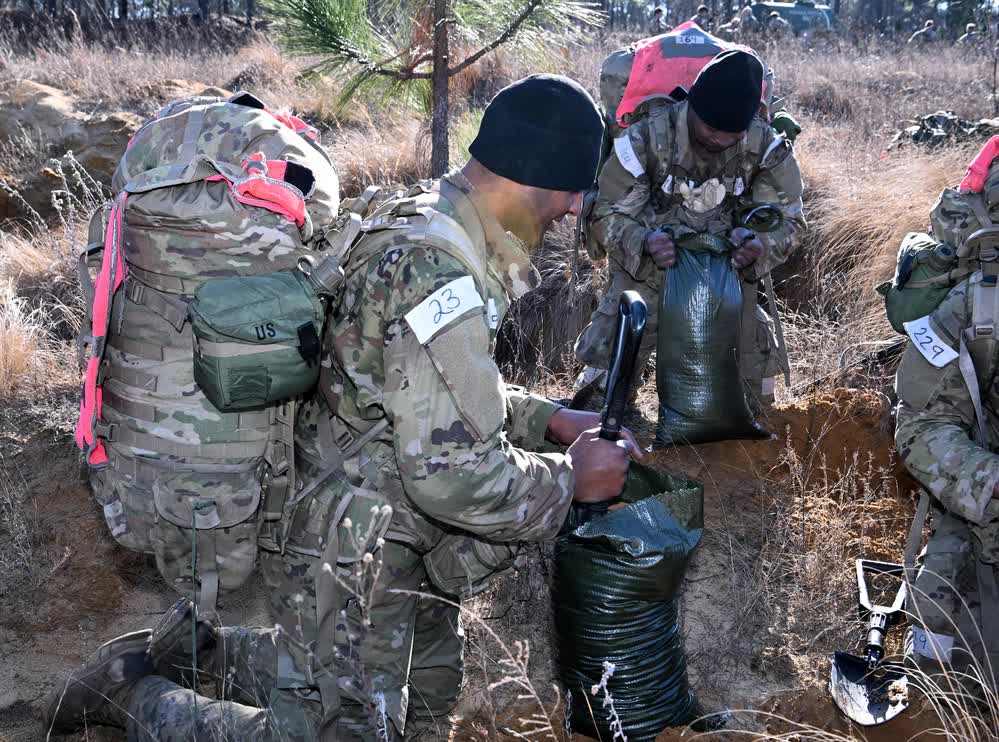Russia’s two-year war on Ukraine has demonstrated how antiquated warfare and tactical concepts can still have a place alongside cutting-edge technology on a modern battlefield. Alongside controversial Iranian aerial drones smart enough to make kill decisions, Russia has deployed inflatable tanks and artillery pieces as decoys, a strategy popularized in World War II. Even the emphasis on artillery warfare blends old and new: Soviet-Era howitzers that hark back to the iron cannons of the 1500s share space with HIMARS shooting precision-guided rockets and sophisticated radar systems.
For Russia, this dichotomy is often a result of simple necessity: its weapons stockpile is old and limited, and it must use what it has available to continue its war of aggression against a smaller Ukrainian force supplied by powerful Western allies including the United States. Russia’s use of armored trains for transport, mine-clearing, and resupply, however, has drawn particular scrutiny and criticism.
The country has employed two specially equipped and armed trains since its invasion of Ukraine in 2022: Volga, used for mine-clearing, track repair, and reconnaissance; and Yenisei, reportedly built out of parts stolen from Ukrainian train cars and used for logistics and refugee movement. While much of the information collected about these trains is pulled from video footage and imagery and can’t be confirmed, the site Army Recognition reports that Volga’s walls are protected by 20mm of steel and sandbags. Both trains reportedly are armed with ZU-23-2 anti-aircraft cannons and contain mounting locations for machine guns. Yenisei is reportedly about 130 meters long, while Volga is 106.
Russia’s affinity for armored trains – understandable given the sheer breadth of the country and the necessity for reliable and consistent overland transport – is well-documented and dates back to the Russo-Japanese War in the early 1900s. Armored trains were also employed extensively in the early part of World War II as Hitler’s Germany was pushing into the Soviet Union, and even played a role in Russia’s invasion of Afghanistan in the 1980s.
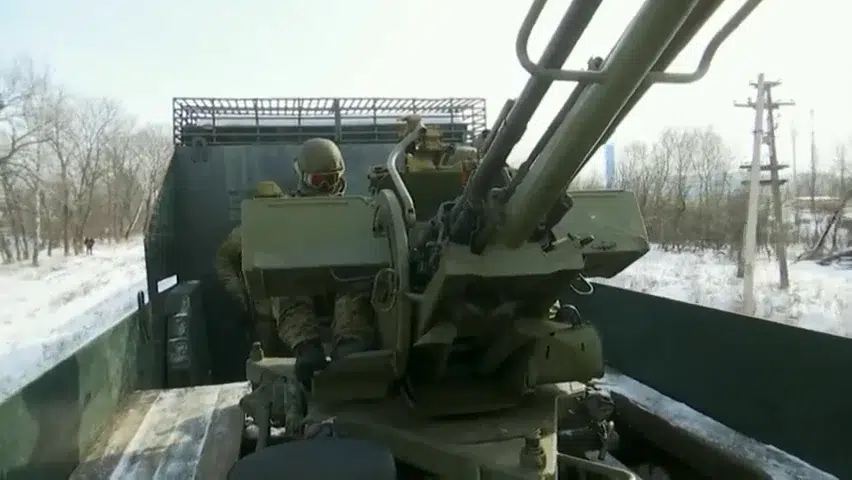
Russian President Vladimir Putin has his own highly armored and luxuriously appointed Ghost Train for transport. Its identity is such a highly guarded secret that a hobbyist trainspotter who posted a picture of the train in 2018 now lives in self-exile for his own protection.
However, as details have emerged about these new armored transport trains used in Ukraine, observers have expressed bemusement. A video by the YouTube channel EngineerReact summarizes the primary problems with train warfare in the 21st century, calling Russia’s armored trains “a terrible idea.” Sure, the video acknowledges, Russia’s extensive rail network and special historical affinity for military trains increased the appeal. But trains’ inability to maneuver or evade threats due to their fixed track makes them sitting and predictable targets for the enemy.
“As time has progressed, more precise targeting capability has decreased the effectiveness of the system,” the voiceover adds. The Russian trains’ weapons, it continues, provide scant defense against bomb-dropping drones and HIMARS rockets.
Related: Russia’s Free Companies and their medieval counterparts
The armored train car does little to change the picture against modern weapons, the critique goes on, and showcases “an old way of thinking regarding tactics.”
Reports have already indicated that Ukrainian forces have successfully targeted Russia’s train network, with Ukraine’s Territorial Defence Force claiming in May 2022 that it had blown up an armored train car, but later saying it had just damaged the track.
But Richard Killblane, a former Army Special Forces officer who spent two decades as command historian for the Army Transportation School told Sandboxx News there’s nothing foolish about Russian train warfare. In fact, he said, the U.S. military would be smart to learn from it.
Killblane, who has chronicled the Army’s use of trains from the Civil War through operations in Iraq and Afghanistan, said in an interview that train interdiction risks are often overblown and the value of train transport for tactical resupply often understated. He said the pushback on Russia’s use of rail is akin to the concerns that were raised about the Army’s use of trains in Iraq. Repair to blown-up train tracks can be completed rapidly – within a matter of hours – meaning that disruptions due to attacks on rail are minimal, he said.
Even today, he said, accurately and effectively targeting a moving train is more difficult than it appears. And as long as trains are used for equipment movement rather than personnel transport, the human toll of an accurate and successful attack on a locomotive is relatively minimal: just a few operators. By comparison, he said, equipment movement by truck requires many more human operators and faces similar maneuverability limitations as transport typically occurs via roads and highways.
“Even to this day, rail can move a lot more cargo than we can by trucks,” Killblane said. “But our leaders get stuck in a mentality that, hey, put it on a truck.”
The U.S. Army moved nonsensitive resupply cargo such as food, water, and medical supplies via rail in Iraq using established rail lines through the mid-2000s, Killblane said, citing one particular instance in which he helped to coordinate the transport of a battalion’s worth of cargo into Mosul in 2003.
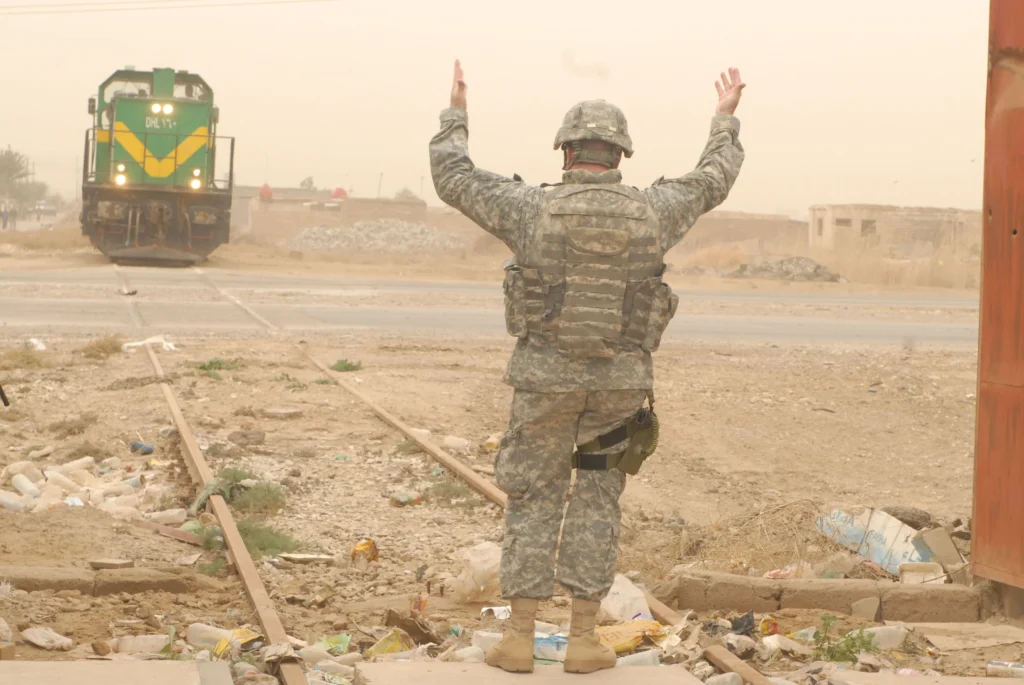
“That was probably the best use of [military trains] in an offensive operation, in combat, in the recent wars,” he said.
When a burning train rolled into the station in Taji, Iraq, during the Sadr Uprising in 2004, the Army’s use of rail in the country effectively came to an end. Today, the Army maintains a limited rail capacity within the 757th Expeditionary Railway Center, a Reserve element. A small number of railway advisors monitor and maintain the service’s remaining cargo trains and ensure their safe operation.
Killblane suggested there’s a place for armored rail in today’s wars. The system, he said, has been unfairly written off because it feels outdated and is believed to be more vulnerable and disruptable than it actually is. While it’s still far from certain how well Russia’s armored trains will survive the current conflict, Killblane said there’s an opportunity now to modernize military rail for contemporary and future wars.
“My premise is, hey, let’s pick up where we left off and improve on it,” he said.
